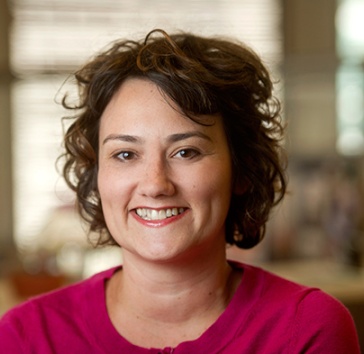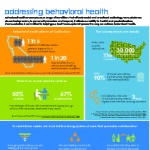Bridging the Gap Between Behavioral and Primary Health Care for Low-Income Patients

“Mental health is defined as a state of well-being in which every individual realizes his or her own potential, can cope with the normal stresses of life, can work productively and fruitfully, and is able to make a contribution to her or his community.”
A traditionally marginalized component of the health care system, mental health and substance use issues have long been treated separately from physical health—despite the fact that we know they can have an impact on our physical well-being.
Bridging the divide between behavioral and primary health care not only makes sense, it’s what patients want. Recent Blue Shield of California Foundation research reveals that low-income patients prefer to receive behavioral health services in the same setting as they receive their primary care. It also shows that a broad gap still exists between need and available treatment. Among low-income Californians who have needed to discuss a behavioral health issue with a provider in the past year, only half of them have been able to do so, according to the foundation’s survey report, published in March 2015.
Our state’s safety net couldn’t be better positioned to change this reality. Since California opted to expand Medi-Cal (the state’s Medicaid program), hundreds of thousands of residents now have access to mental health and substance use benefits—many for the first time. This means that families and individuals who have struggled with behavioral health problems for years can finally get help.
Unfortunately, our current system doesn’t have the capacity to respond to the needs of this growing patient population, and separate reimbursement streams for behavioral and primary care continue to stymie care coordination and information sharing across providers. To make it easier to access mental health and substance use treatment, and deliver the type of care that low-income patients need and want, we must integrate and reshape our existing systems of care. Doing this will require three things:
- Putting the patient at the center of system transformation. This means providers and practices will have to (1) work with their patients to redesign the way that care is delivered and (2) open themselves up to new partnerships and care models.
- Engaging new partners, services, and supports in the community—beyond the clinical setting. For example, Community Partners In Care has developed model community engagement and training resources for faith-based, social service, and advocacy partners to use to implement evidence-based depression care. This is especially critical to building culturally responsive systems of care and prevention for California’s diverse population.
- Confronting how primary and behavioral health care have historically been funded. This requires advocating for policy changes that facilitate more collaborative systems. Integrated care delivery can’t be sustained without integrated financing and shared accountability.
Here at Blue Shield of California Foundation, reaching these goals requires seeding change at the systems level, rather than one clinic at a time. This is because the scale of the opportunity is simply too big and the financing too “siloed.” No single entity can fix the problem on its own. And everyone must be on board, or no one can reap the benefits.
To that end, the foundation is taking a more dynamic approach to our grantmaking. With a focus on population health and systems transformation, we have created an initiative that incentivizes whole communities to collaborate—including primary care, mental health, and substance use providers; county agencies; and Medi-Cal managed care plans. We’re supporting these partners to reach outside of their own organizations to find new answers and allies and requesting that they consider the potential unmet need—and resources—that lie beyond the four walls of their organization.
To help them navigate this new territory, we have developed an evaluation approach to help partners measure the strength of their collaborations, and we are providing support for a learning network, which brings grantees together throughout the year to share lessons learned, successes, useful tools, and best practices.
The foundation has also made strategic investments to help overcome system fragmentation created by outmoded financial structures. This includes grants to (1) establish new channels between grantees and policy makers and (2) generate more meaningful two-way dialogue about the state policies and local practices that will help drive—instead of inhibit—this work. For example, the foundation is supporting the Center for Health Care Strategies to help grantees develop recommendations for, and provide input on the design of, California’s next Medicaid Section 1115 waiver, so that it includes provisions that will make it easy to integrate primary and behavioral care.
Perhaps most importantly, we’re learning alongside the organizations we’re supporting. Through a flexible, responsive grantor–grantee relationship, we hope to develop a grants portfolio that will, in fact, generate real change. Instead of forcing or prescribing an agenda, we’re bending with what works, eliminating what doesn’t, and listening to grantees to ensure that our funding goes to its highest and best use.
Through this uncharted territory, we’re working with our grantees to build a future in which California’s most vulnerable have access to the care they deserve. We hope other funders and people who share this mission and vision will join us along the way.
This blog originally appeared in Health Affairs' Grantwatch Blog on May 16, 2015
Get our newsletter
Sign up for occasional event announcements and our newsletter, Intersections, to learn more about the work we’re supporting to make California the healthiest state and end domestic violence.


